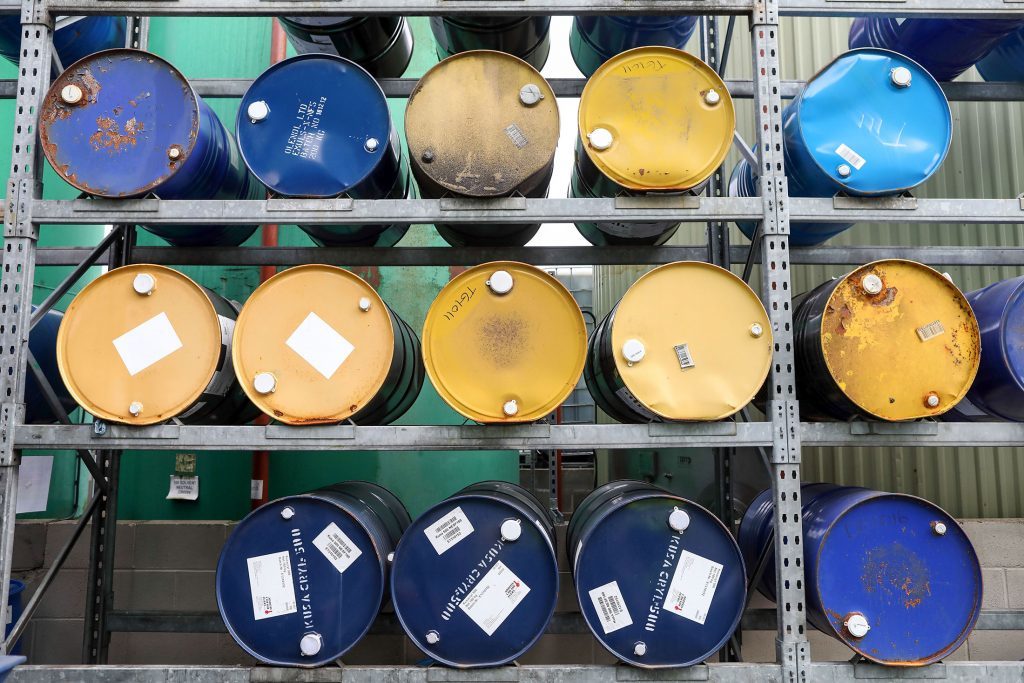
The oil market is battling with a paradox: what happens when the unstoppable force of OPEC production cuts and soaring global demand meets the immovable object that’s U.S. shale?
The answer will determine not only the price of crude, already at its highest in two years near $60 a barrel, but also the fortune of Big Oil companies and energy-rich countries from Saudi Arabia to Russia and Brazil.
For many at the annual Asia-Pacific Petroleum Conference in Singapore, one of the global oil industry’s biggest events, the clash means prices will remain in a narrow band of $50-$60 a barrel the rest of the year and into 2018. Yet a growing minority — notably oil trading giant Trafigura Group — believe the paradox will be resolved next year as U.S. shale proves it isn’t an immovable object that can continue capping prices.
“The market may well discover it has been asleep at the wheel and far too relaxed about shale keeping a ceiling on prices forever,” said Ben Luckock, a senior executive at Trafigura, the world’s third-biggest independent oil trader.
For sure, U.S. oil production has failed to grow significantly this year, with output in June at 9.1 million barrels a day, only marginally higher than 8.9 million barrels a day in January. Shale executives, once focused on growing output at nearly any cost, are putting more emphasis on boosting their profitability. And the number of rigs they’re putting to work has flat-lined over the past three months.
Yet many others are far from convinced that the paradox will be resolved anytime soon. Companies from Vitol Group, the largest independent oil trader, to energy major BP Plc still see shale as creating a ceiling, especially at current prices.
“Anything above $60 a barrel is going to be a massive incentive for U.S. shale to ramp up production,” said Chris Bake, a senior executive at Vitol.
Brighter Mood
There is, however, a growing consensus that the market looks stronger than a year ago. At APPEC, the mood at the evening parties this week was certainly far more bullish than in 2016. Gone are the days of $40 a barrel oil, traders and executives said, as the current rally seems better anchored in supply and demand fundamentals than the one in January-March, when Brent crude prices briefly rose above $55 a barrel only to crash shortly after.
“Rebalancing is already on the way,” said Janet Kong, the top executive of BP’s trading arm in Asia, echoing a widely held view across executives.
Brent crude, the benchmark for more than half the world’s oil, was at $57.50 a barrel on the London-based ICE Futures Europe exchange at 1:07 p.m. Singapore time. Prices are up 10 percent this month and almost 20 percent higher this quarter.
Global oil demand is growing faster than the 10-year average on the back of strong diesel consumption. “This is a perfect world for refining,” Gary Ross, the founder of consultant PIRA Energy, said on the sidelines of the APPEC conference, held by S&P Global Platts. As refiners enjoy strong margins, they have an incentive to buy more oil.
With demand outpacing supply, crude and refined products inventories are shrinking. In developed countries, commercial stockpiles fell in July to 190 million barrels over the five-year average, compared with a 302 million-barrel surplus in January, according to the International Energy Agency. Supplies stored at sea are dwindling too, traders say.
Tighter Market
The physical crude market is reflecting the growing tightness, with North Sea and U.S. varieties trading at multi-year highs to their benchmarks. Hedge funds are again piling into oil, as are long-term passive investors, attracted not only by rising prices, but also by a profitable change in the forward-price curve.
While a year ago senior oil traders and energy executives saw prices staying at the lower end of a $40-$60 range, this year most predicted a $50-$60 band for 2018. Of the two dozen executives interviewed this week on the sidelines of APPEC and at cocktail parties, only a handful saw prices averaging more than $60 a barrel next year. And only two said that $65 a barrel was a buying opportunity.
Still, even the most bullish traders believe the Organization of Petroleum Exporting Countries and its allies, which include Russia and Mexico, need to extend output cuts that are set to expire at the end of March 2018 to avoid a build-up in inventories. The need for sustained production curbs is a sign the bulls are on fragile ground.
If OPEC takes advantage of the demand-driven rally and ends its production cuts in early 2018, global supply will again threaten to overwhelm demand, pushing stockpiles up and depressing prices.
“It might look tempting to take advantage of the current price strength momentarily, but if OPEC acts responsibly now, short-term pain will lead to a long-term gain and not the other way round,” said Tamas Varga, an analyst at brokerage PVM Oil Associates Ltd.